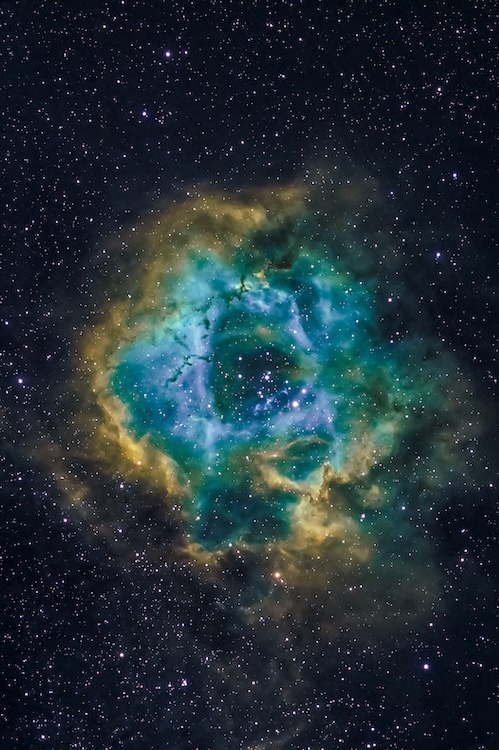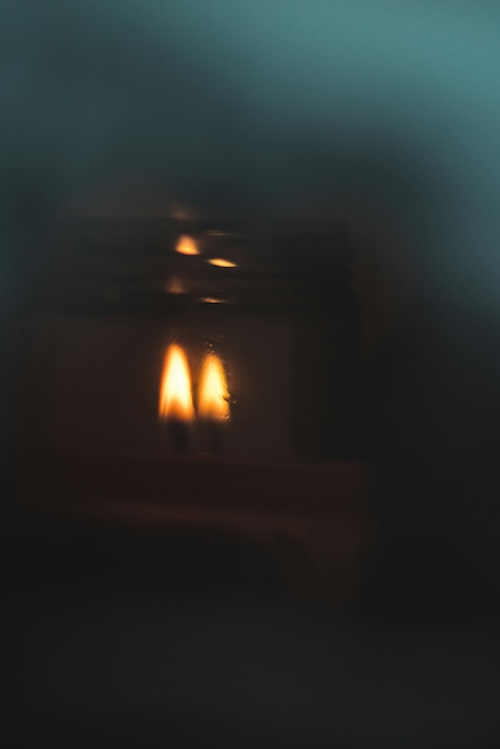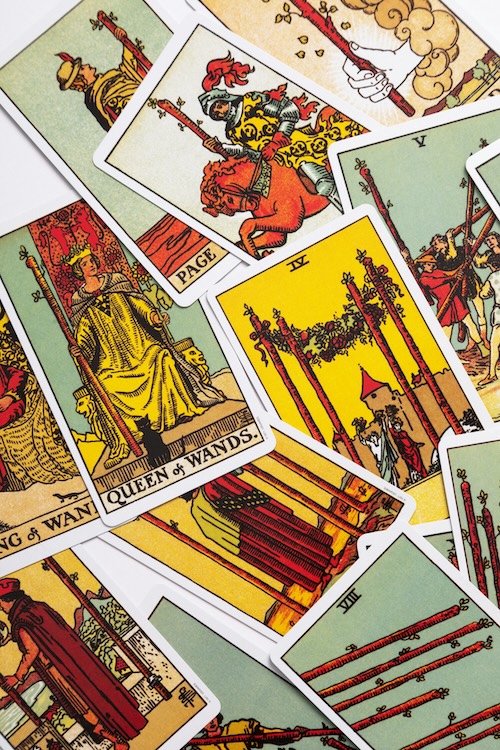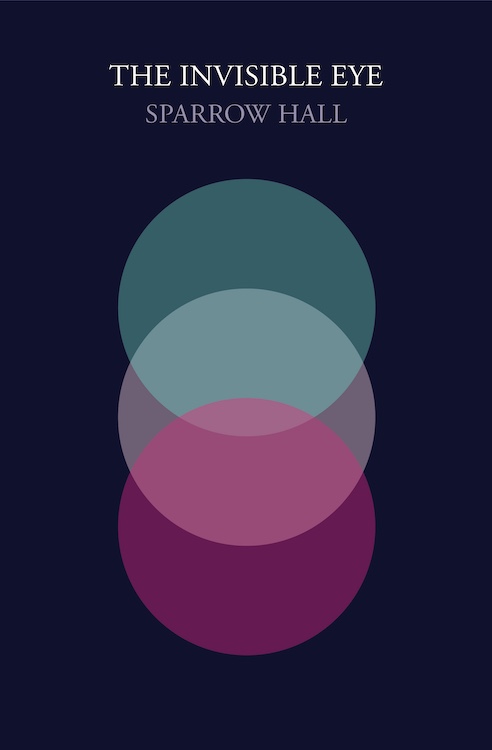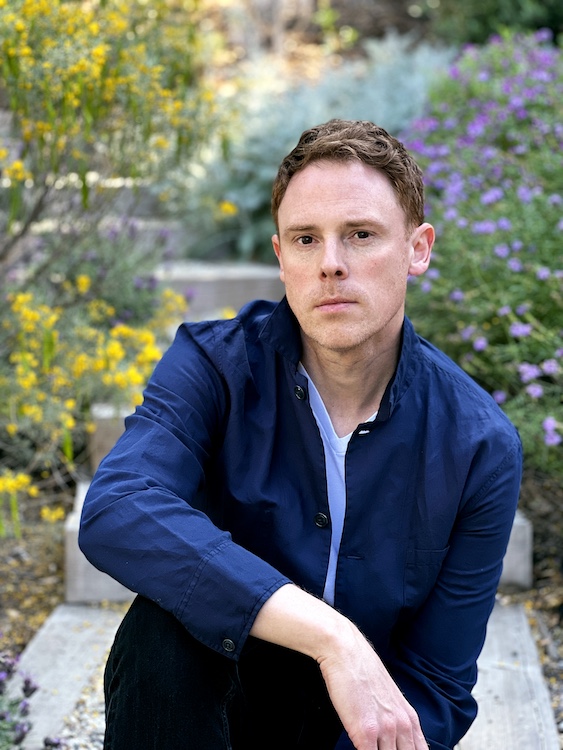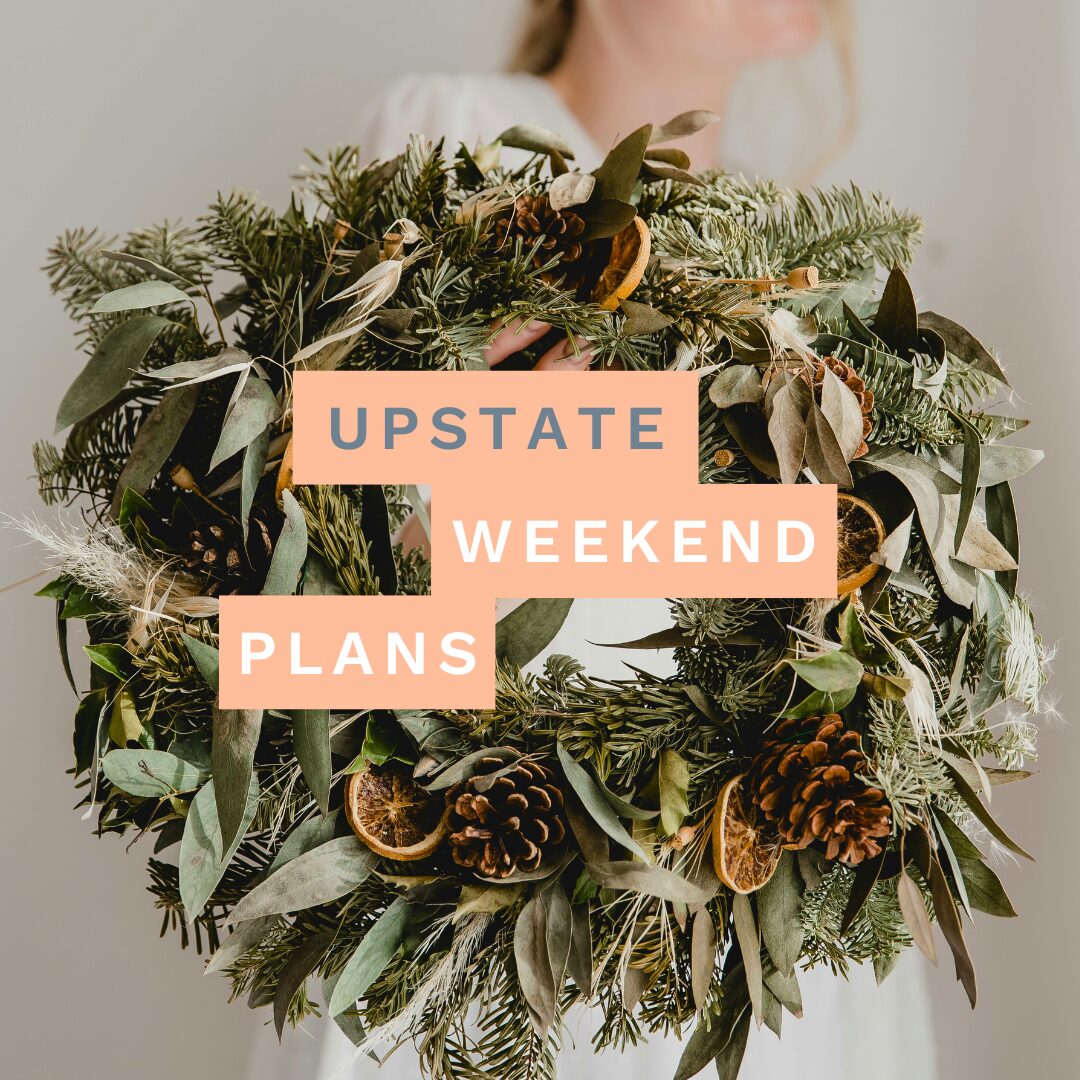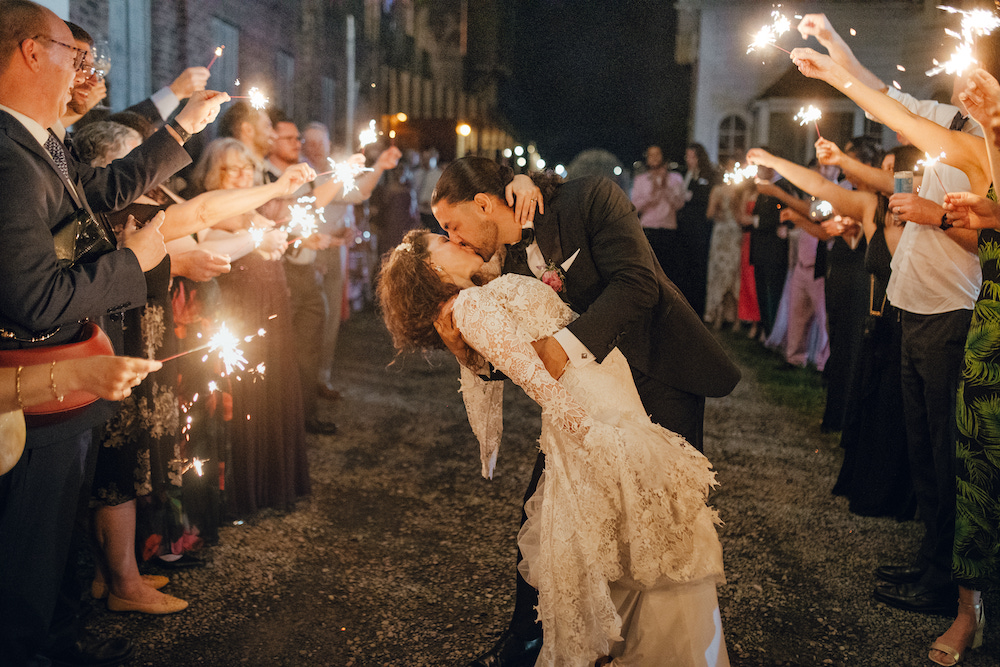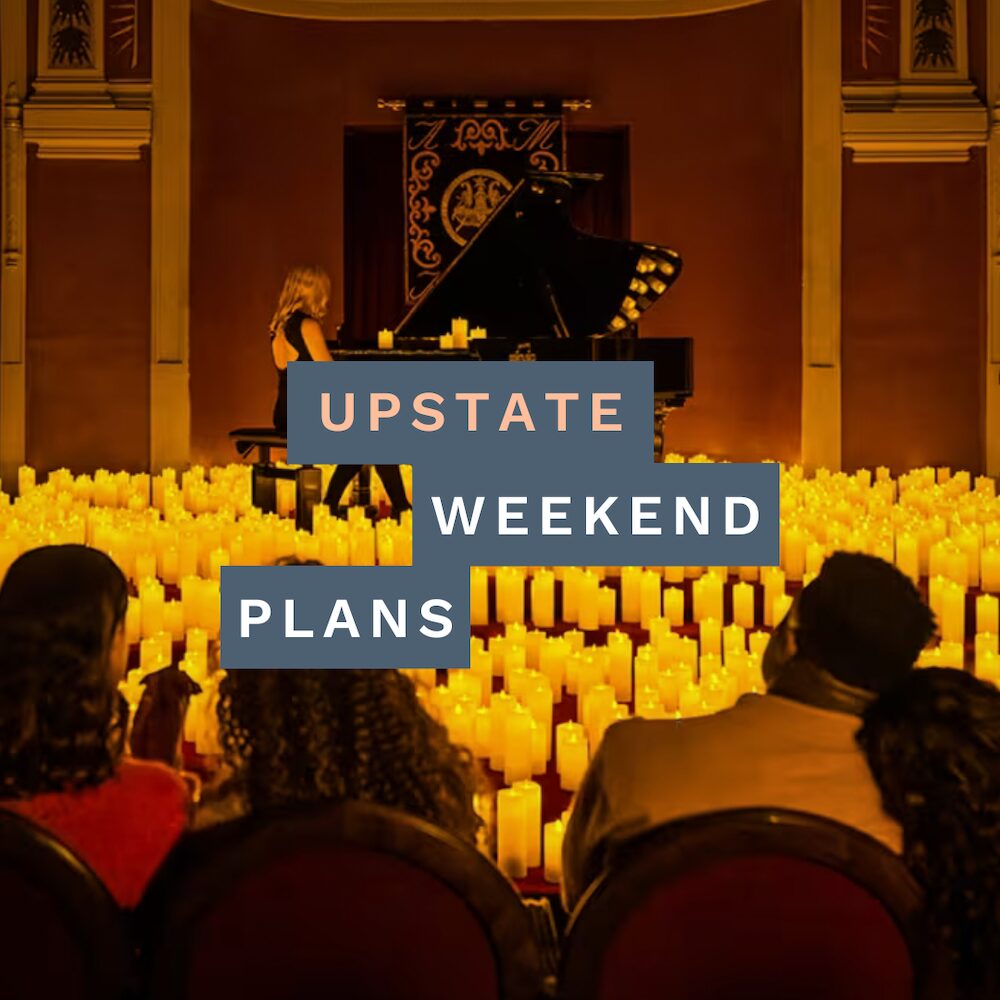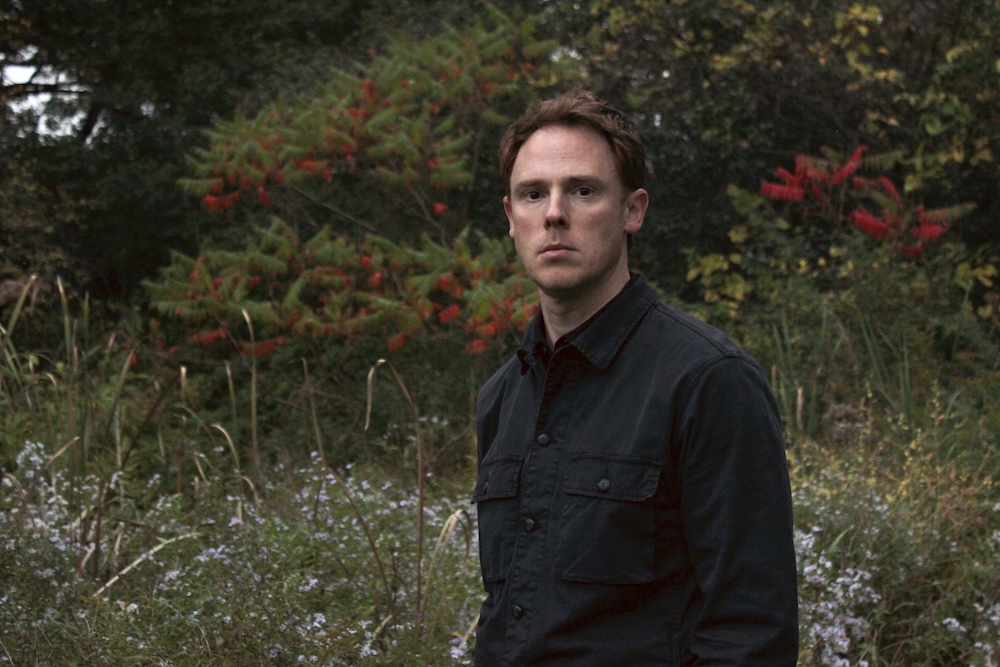
The Invisible Eye: Past Lives, Present Shadows
There are thrillers, and then there are metaphysical tales that hum with something otherworldly. Sparrow Hall’s The Invisible Eye (June 2025) is both an atmospheric psychic thriller that moves from the raw pulse of Manhattan’s fashion scene to the shadowed interiors of the Hudson Valley and Catskills. Here, in a landscape alive with folklore, ruins, and strange energy, past lives collide with present danger, and the terrain itself becomes a character—haunted by memory, secrecy, and the unseen.
At its center is Catherine Harper, a woman with second sight who glimpses torrents of past lives in the eyes of strangers. Isolated by a gift she never asked for, Catherine stumbles upon classified files among her late father’s belongings—documents that suggest her torment may not be an accident, but the residue of a Cold War–era psychic program. Haunted by visions she cannot control and pursued by forces she doesn’t fully understand, she is drawn into a shadow world where paranormal science and state surveillance converge, and where unraveling her gift could fracture everything she thinks she knows about reality.
A graduate of Bennington College and a longtime creative director, Sparrow Hall now lives in the Hudson Valley, where the land itself—rich with folklore, legend, and uncanny energy—seeps into the book’s bones. With The Invisible Eye, he has created not just a novel but a universe: immersive, speculative, and deeply human, where past lives flood the present and the act of knowing—yourself, your history, your community—becomes the most radical truth of all.
Let’s learn more about The Invisible Eye and the role the Hudson Valley plays in this novel.
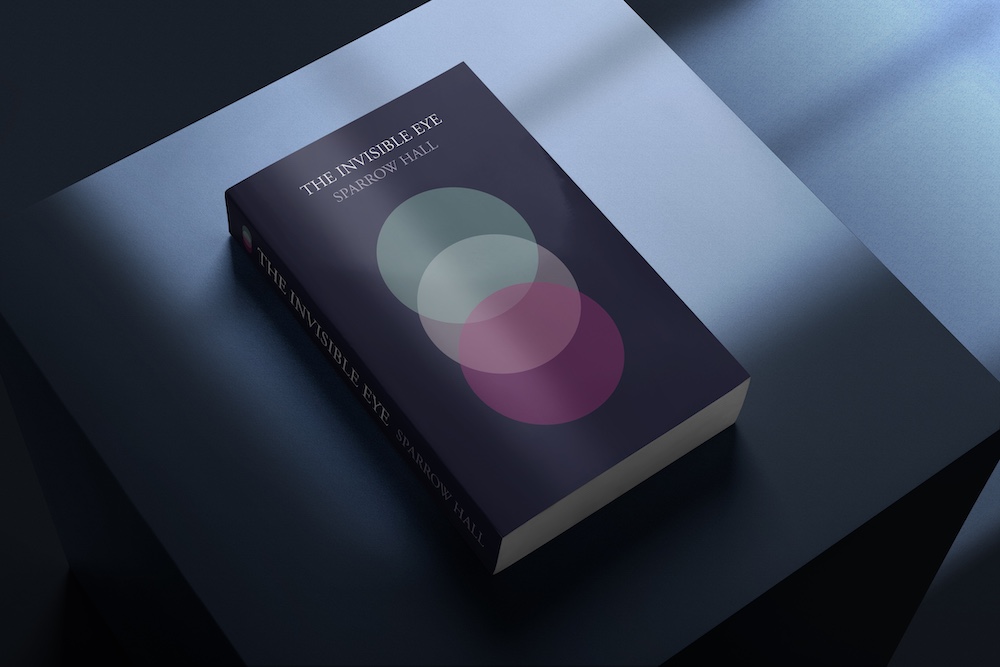
INSIDE+OUT: You’ve said that the Hudson Valley and Catskills aren’t just settings in The Invisible Eye—they’re “psychic terrain,“ alive with history, folklore, and strange energy. What drew you to this region as both a home and a crucible for Catherine Harper’s journey?
Sparrow Hall: Definitely the energy. I remember coming up this way, years before I’d settled down here. I’d be driving up 87, and there’s this bend that you come around, and the mountains rise up, purple in the distance. I thought, “I’m going to live here one day.” I felt the pull. I read a story about the psychic healer Andrew Jackson Davis, how he felt called by a higher power to move to Poughkeepsie, which, granted, is kind of a weird place to be called to. But sometimes you just have to answer the call. Poughkeepsie is where my paranormal experiences took on a new dimension. I live further north now, up in Columbia County, which is just a different channel of the same frequency.
“Poughkeepsie is where my paranormal experiences took on a new dimension. I live further north now, up in Columbia County, which is just a different channel of the same frequency.”
Everywhere you go in the Hudson Valley, you’re reminded of its history. Placards along the roadside mark moments in the Revolutionary War. The Revolution moved through this whole region. And then after that, another revolution—of spirit—the Burned-over District, the Second Great Awakening. The Shakers up in New Lebanon, and Joseph Smith further west. Something about this area pushes people beyond themselves. In the book, it’s where Catherine comes into her power, where she breaks through her fears, and arms herself for her own revolution—of the self.
Where are you originally from, and what personal path—through writing, brand strategy, and the creative arts—led you to this first novel and roots in the Hudson Valley?
Sparrow Hall: I’m originally from Rochester, in Western New York. I call the Hudson Valley my home, but I think I’ll always be a Rochesterian at heart. Rochesterians are some of the most pragmatic, irreverent people you’ll ever meet. I think you need that in your make up if you’re going to dive into these strange topics—a clear head and a sense of humor. When you start going down this path, you realize fact is a lot stranger than fiction—and if you can’t laugh at the absurdity of it all, it becomes a little scary.
As for the path that brought me here, I transferred to Bennington College from the University at Buffalo in the mid-90s to pursue my writing, but more so to find a place that felt right, that fit my personality and inspired me. At the time, Bennington was this strange blend of Dead Poets Society meets The Rules of Attraction. Bret Easton Ellis, Donna Tartt, and Jonathan Lethem–they’d all graduated a few years prior and left a certain energy in their wake. A sort of NYC-LA “fastness” that sparked something. Where writers of the past felt like journalists living on the fringes, this new breed of writers felt like they were connected to The City, to a raw new lens, to what was happening now. I wanted to be a part of that—to be a writer of that caliber, but also to inhabit that world. I stumbled my way into branding and advertising by chance.
As a writer, one of the biggest challenges is trying to figure out how you’re going to make a living. Copywriting paid the bills—and it put me in the center of the energy at that time. Honestly, working at Interbrand in New York in the late 90s was a little terrifying. It was the last days of the old ways. People smoking in their offices, yelling at each other. Designers deliberating over mood boards and logo exploratories. I had no idea what was going on. Everywhere you looked, you were surrounded by these sharp, good-looking people who seemed to own their lives. And they were only a couple of years older than you. It was intoxicating. I met my mentor, Laurie, at Interbrand. She was a magical thinker who magically thought I deserved to make a place there. She took me under her wing and sort of launched me into adulthood. She’s still one of my closest friends and one of the earliest readers of the book, helping to steer it towards the final draft. All those people at Interbrand, in The City at that time, and the years following, influenced the world that Catherine inhabits. She’s one of them. If I’d worked with her, I would’ve had a huge crush on her, with no idea how to work up the game to even say hello.
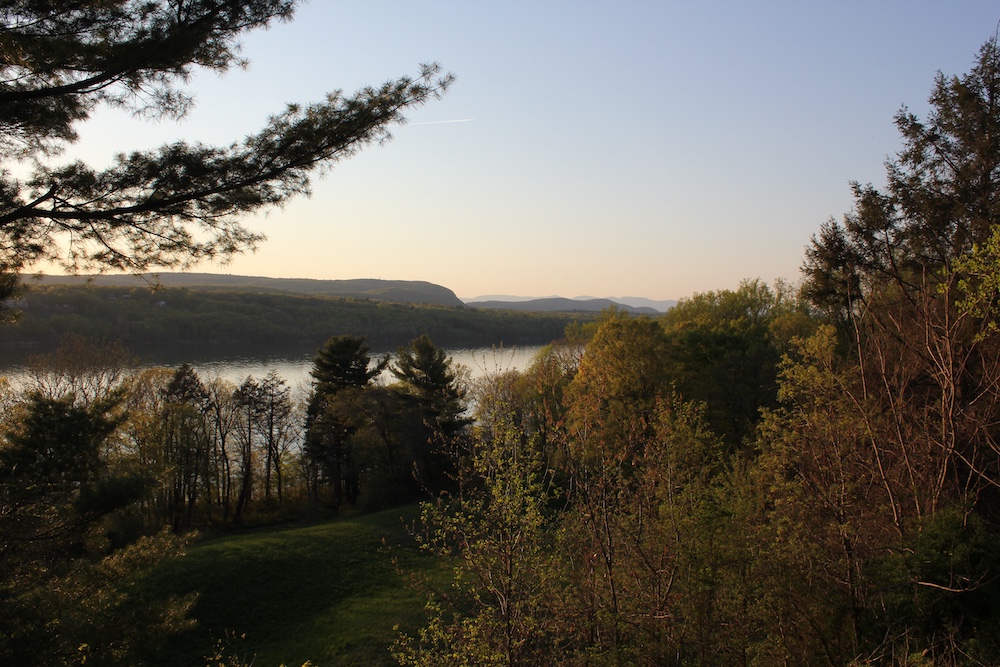
The book moves between Manhattan’s gloss and Upstate’s shadows. Why was that duality important for you in shaping Catherine’s story?
Sparrow Hall: It’s something I lived personally. Ever since I moved Upstate in 2005, I’ve had one foot in the Hudson Valley and another in New York City. It tunes you into two completely different frequencies. The City is all about modernity—it keeps you looking forward. The Valley is about the past, reminding you of the people and the ways that came before you. That push-pull produces a sense of urgency. It makes you ask yourself: “What am I doing here? What am I contributing to this moment?”
“Over the course of that year, I started experiencing… strange things. Lights were communicating with me. Ceiling lights, lamps. Snapping on and off like Morse code.”
You’ve spent over a decade exploring paranormal phenomena and quantum mechanics. Was there a moment in your research—or a local encounter—that completely shifted how you see reality?
Sparrow Hall: 2012 was a strange year. I’d just started working on the book. I was doing a lot of research, mostly at the house in Poughkeepsie. I learned transcendental meditation that year, taking classes at the David Lynch Foundation in The City. I wanted to help myself focus, to clear my mind, and make room for whatever this book was going to be. I definitely made room for something. Over the course of that year, I started experiencing… strange things. Lights were communicating with me. Ceiling lights, lamps. Snapping on and off like Morse code. And “presences.” That’s the only way I can describe it. I felt these things in the house. Spirits? Interdimensional beings? I have no idea. It was like living with invisible roommates. At some point, I was like: Okay, you need to go. I knew someone who’d had a similar experience. She called in a white witch to cleanse the energy from her home. She walked me through the whole process. I was like, you know what—I feel like I can do this. I broke out the sage, said a prayer, and exorcised the house top to bottom. I was like a fumigator. And it worked. I could actually feel these things leaving the house. Most just left on their own, but one stayed put—like it was hiding. I found it in the stairwell going down to the basement. I couldn’t see it, but I knew it was there, watching me. I spoke to it directly. I opened the front door of the house and said that it had to leave. I felt it move past me, reluctantly, out the door, and I shut the door behind it. But it didn’t leave the property. It was looking in through one of the dining room windows. Not in some creepy way, but like it was, I don’t know… scared. Like it didn’t know where else to go. I closed my eyes and spoke to it. I said a prayer for it, that it would know its way home. And that was it—it was gone. That experience stayed with me. This realization that these things have feelings. That everything is trying to find its way home. That became a central theme in the story. It’s something I think about to this day.
“I I found it in the stairwell going down to the basement. I couldn’t see it, but I knew it was there, watching me. I spoke to it directly. I opened the front door of the house and said that it had to leave. I felt it move past me, reluctantly, out the door, and I shut the door behind it. But it didn’t leave the property.”
Music clearly plays a role in your process—you even created a playlist for the novel. How did sound, rhythm, and specific songs influence the narrative arc? Does the playlist mirror Catherine’s transformation?
Sparrow Hall: I was listening to music the whole time I was writing the book. There were certain songs and bands that just felt like they inhabited the world of the story. The playlist I curated on Spotify is a small representation of the larger mix I had playing in the background.
Music has a way of transporting you, and that’s what the playlist did for me. I would turn it on in the car, when I went out for a run, while I was cleaning the house, and it would put me in the mindset of the book. It let me explore and meditate on Catherine’s world even when I wasn’t writing. I created the Spotify playlist as a way for readers to enter that world and vibe with the characters on an immersive level. I think the music reflects Catherine’s inner life, her lens, how she moves through her journey. The introspection. The extroversion. The wave and wake of her frequency.
The Hudson Valley is steeped in stories: the “Newburgh Triangle,“ Pine Bush UFO lore, and haunted caverns. Which tales or locations resonate most with you personally, and did any slip directly into the novel?
Sparrow Hall: The west side of the Hudson River. I met with a psychic in Kingston a few times. I asked him: “What’s up with all the psychics and witches and UFOs on the west side?” He said it was the vortexes. Apparently, it’s like a hot spot—from Nyack all the way up to Albany. He said that’s why so many people who are in touch with “the energies“ are drawn to the area—even if they don’t realize it. Vortexes have a way of magnifying energy, whether that’s connected to a gift, a craft, whatever you want to call it. It’s like plugging into a power source. One of the characters in the book, Leslie Vos, a reclusive it-girl socialite and one of Catherine’s closest confidants, suffers from her own unwanted second sight. She sees ghosts. Everywhere. Ever since she was a child. Her family has a farm in Montgomery just outside of Newburgh. I knew the property had to be on the west side of the river—and that they’d had it forever, one of the early Dutch families who’d come over in the 1600s to make their fortune in the fur trade. The Vos’s were old money now, New York society. They held onto the farm Upstate as a sort of country outpost for family gatherings. I began to understand the dimensions of Leslie through her family’s history and their relationship to The Valley. She wasn’t a product of her family’s wealth. She was cocooned by it. It was a history bigger than her own, bigger than the strangeness that haunted her.
“I met with a psychic in Kingston a few times. I asked him: “What’s up with all the psychics and witches and UFOs on the west side?” He said it was the vortexes. Apparently, it’s like a hot spot—from Nyack all the way up to Albany.”
Catherine’s second sight makes her both isolated and profoundly connected. What was it like writing in her voice, and how did you balance her vulnerability with her power?
Sparrow Hall: I can relate to Catherine. I’m a people watcher. But more so, I’m a people listener. I find people fascinating—the way we act and speak. It’s a heightened awareness that came out of necessity. I was bullied as a child. You begin to watch everyone—and listen—just to make sure you’re safe. If you’re lucky, as you get older, you come into your own power, and you’re able to transmute that anxiety into a tool. I feel like Catherine found a way to do that. Taking this curse (as she would call it), this lack of control, of being swept into people’s past lives, and turning it into a tool that she uses for her work, a secret ability to see what others can’t.
Your book touches on secret government experiments and psychic testing. How much of that is drawn from history—MKUltra, Project Stargate—and how much is invention?
Sparrow Hall: I have a friend from The City who lives up in Williamstown now. She and I meet up all the time to catch up, laugh, and try to make sense of the crazy time in which we live. She’s tuned into the frequencies—not in some woo way, but as a salt-of-the-earth Jersey girl who sees beyond what’s in front of her. So many of our conversations influenced the book; it’s hard to keep track. One in particular: she once mentioned being part of some kind of experiment when she was a child. She’d go to this government-type building and take these tests that measured ESP. Card tests. Telekinesis. I was like, okay, you’re messing with me now. She was dead serious. And she couldn’t remember half of it—like it was blocked out somehow.
“…she once mentioned being part of some kind of experiment when she was a child. She’d go to this government-type building and take these tests that measured ESP. Card tests. Telekinesis. I was like, okay, you’re messing with me now. “
Her experience inspired the program that Catherine was involved in as a child. When I was writing it, I just assumed I was fictionalizing my friend’s experience. Then people started reading the book. I had another friend reach out to me. Again, a Jersey girl (not sure what the connection is there). She’s a schoolteacher. She texted me. “I was in this program.” What program? Then came about a hundred more texts. I’ve been digging into it a bit more—the GATE Program. Gifted and Talented Education. We think of it as this curriculum for bright children. But it seems like there was something adjacent to it, under the same name. My friend texted me, “There are two GATE programs. The main one for the normies. And the other one for us.” She would attend it once a week. Eight kids to a class in a windowless room off the library. Some of those kids (now adults) are starting to come out on the internet, telling their stories of the tests they went through.
Of all the research you’ve done, what is the most haunting local story you uncovered that took place in the Hudson Valley?
Sparrow Hall: The wave of UFO sightings in the 1980s. The giant Vs and triangles flying silently over Westchester, Orange, and Putnam County. You read the stories of people getting out of their cars on the Taconic State Parkway, watching these things float overhead. They were massive. The size of multiple football fields. But the creepiest part was the silence. Nothing. Just slowly moving over the trees and mountains. It’s hard to imagine seeing something like that.
Local Love: Beyond the metaphysical energy, what are some of your favorite everyday places—cafés, trails, bookstores—that root you here in the Hudson Valley community?
Sparrow Hall: I have a few “loops” that I like to do. Back in the Poughkeepsie days, it would have been Millbrook, Millerton, and Pine Plains. I wrote a good portion of the first draft of the book at Irving Farms in Millerton. It’s a great space. Excellent coffee and just the right amount of social white noise to keep my mind focused. I would drive through the Shekomeko Valley on the way out there—the zone between Stanfordville and Millerton. There’s a part of Hunns Lake Road where you come around the curve and the valley opens up like a wide green basin. There’s nothing out there but farms and a few residences. It’s just this peaceful, quiet place. I told a friend once that when I die, my soul is going to fly through that valley as I say my last goodbyes.
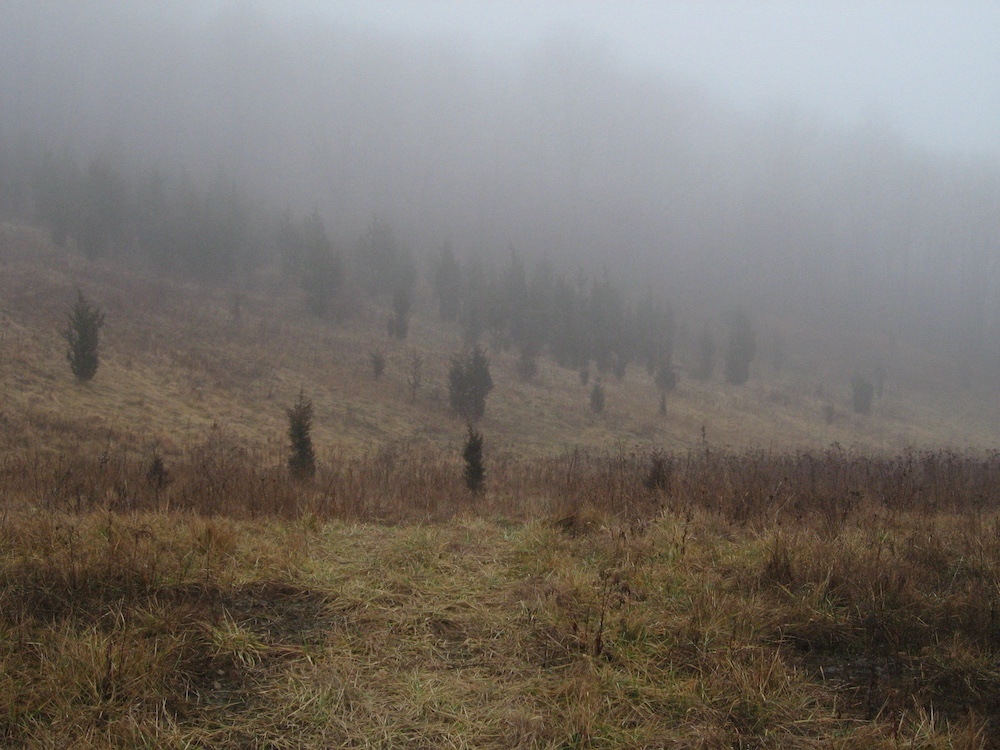
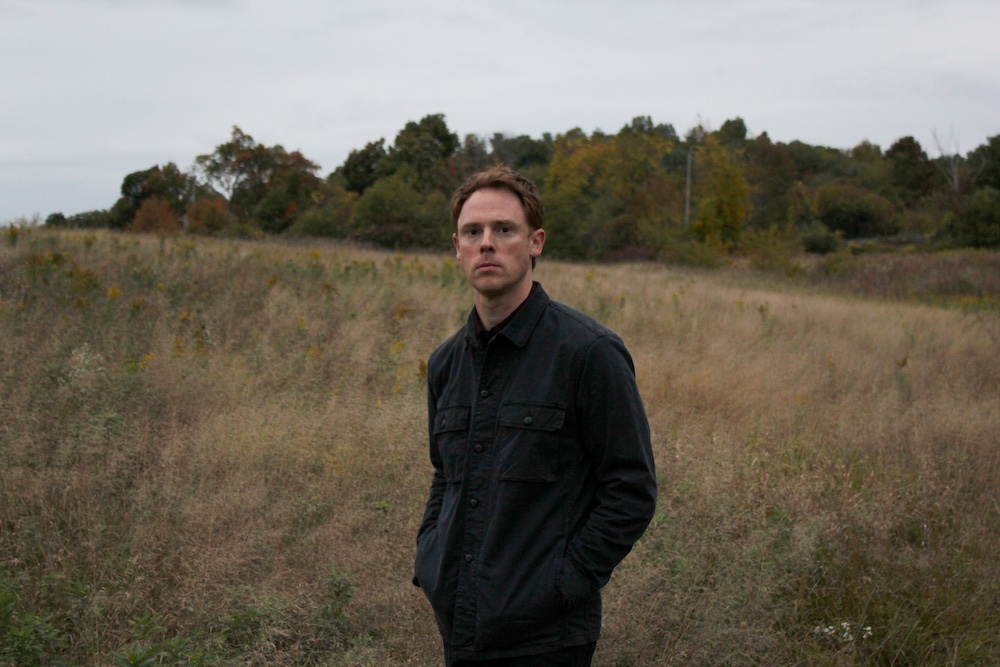
If you could give Catherine—or yourself—one superpower beyond what’s already in the book, what would it be?
Sparrow Hall: The ability to bi-locate, to be in two places at once. There’s a belief across various cultures around the world—from Native Americans to the ancient Norse people—in something called a “herald,” or a “forerunner.” It’s a kind of astral projection. You send your spirit ahead to scout a territory, or to act as your agent, while your body stays behind. I can imagine Catherine benefiting from a power like that. If only to quiet her anxiety. Being able to look ahead and see that the coast is clear. Anyone on a quest would want a gift like that. It also ties into the scientific themes threading throughout the book—the underpinnings of the program Catherine’s seeking to uncover. In physics, you have binary particles, twin particles that can be separated at great distances, in constant contact with one another through the quantum field—perhaps even separated by dimensions. A connection “beyond the veil,” as mystics would call it. It feels like there’s something beyond our known dimension that Catherine is trying to reach, and I like the idea of her being able to project herself there to see what’s on the other side. It’s something I’m exploring in the next book as Catherine dives deeper into her quest.
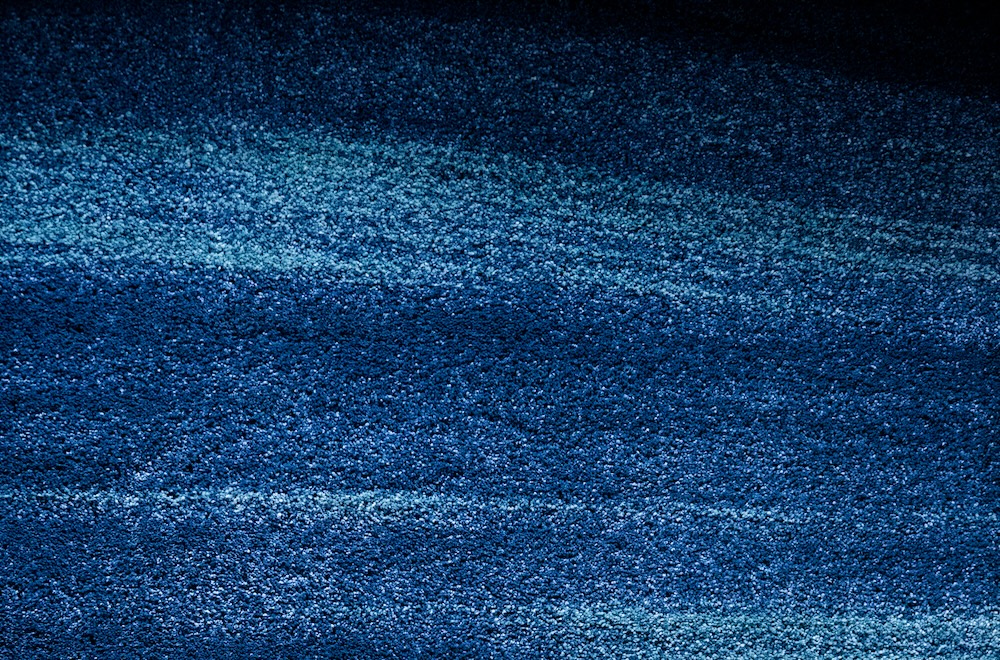
Photos courtesy of Sparrow Hall
The Invisible Eye is available on Amazon, Bookshop.org, or anywhere you buy books. Learn more about The Invisible Eye at sparrowhall.com.
You can follow/connect with Sparrow Hall on Instagram, Facebook, TikTok, X, Goodreads, and YouTube.
+ + +
Click HERE to see all of our exclusive interviews with the amazing folks who proudly call the Hudson Valley home.
Write a Comment
You must be logged in to post a comment.



